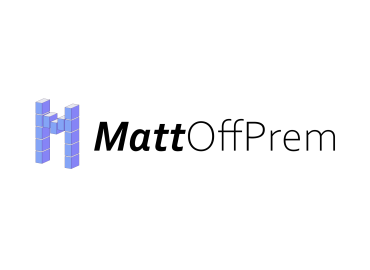Festive Tech Calendar Review

This year’s Festive Tech Calendar has had some great events and videos. Gregor and Richard expanded the series from being Azure focused to encompassing all cloud technologies although there was still a large focus on Azure. They also expanded the series to include over 90 live streams, Q&A’s and even a competition. Here are my highlights of the series. (There is a slight infrastructure bias due to my experience)
Overall Wellbeing - Dona Sarkar (02/12)
In the first couple of days of the event, there was a great post from Dona Sarkar about burnout and helping the community find the right balance between family, work, and helping others.
Careers with Sam Erskine (03/12)
In this video, Richard and Gregor talk to Sam Erskine about his career and experiences, although Sam does a good job of interviewing the interviewers. My main takeaways from this chat are that you should always work for yourself and aim to make yourself redundant. If you don’t you are just blocking your progress. When it comes to your career it’s not where you begin but the opportunities along the way and finding what connects which should guide you.
Hackathon (03/12)
This was my favourite event of the whole calendar. Having a challenge to push my Azure knowledge and IaC skills and although I did not win I had a lot of fun creating a solution.
My Submission can be found on Github and a full review of my solution and lessons learnt can be found in a previous post
Azure Infrastructure as Code Live! - Sam Cogan (08/12)
Annoyingly I missed the live stream for this session, but this was a Twitch stream from Sam Cogan. The stream was an AMA (Ask me Anything) style stream so don’t expect an hour of slides. Sam answers various questions and does several impromptu demos. Initially, he talks about the pros & cons of the various Infrastructure as Code languages (Terraform, Bicep, Pulumi, or ARM Templates), moving into testing ARM Templates with Pester and arm-ttk, finishing with comparing Infrastructure as Code with Configuration as Code briefly covering Ansible, Puppet, Chef, and DSC.
AMA Scott Hanselman (08/12)
I don’t think there is a recording of this session, but it was a good relaxed chat with Scott Hanselman hosted by Chloe Condon, there wasn’t much in-depth chat but a more relaxed AMA chatting about side projects and plans for the Christmas break.
How I Got Started With Creative Coding - Marc Duiker (11/12)
This is a blog post from Marc Duiker about his creative coding, games, and 8-bit avatars which appear on Twitter on a number of accounts. He also talks briefly about his interest in computer graphics. This struck a chord with me, and my university days creating very basic fractal landscapes and animations during a Computer Graphics module.
Terraforming with GitHub Actions - Ned Bellavance (15/12)
This is a great video about using Terraform within GitHub Actions (as suggested by the name of the video). It was interesting to see how other people use GitHub Actions with Terraform. I have played around with it but only really in sandbox environments. This is a great introduction for anyone that wants to start using Terraform to deploy infrastructure via GitHub actions.
Static analysis of Terraform code for Azure resources - Dushyant Priyadarshee (24/12)
In this video Dushyant Priyadarshee goes over the static analysis of Terraform code using tfsec an open-source code analyser. It can be used to look for potential security or best practice issues. I don’t have much experience of Terraform code analysis tools, but good to see what is possible from the Open Source community.
Prepare for Awesomeness - Rocking your World with Azure Static Web Apps with Josh Carlisle 25/12
Hopefully, people did not miss this video from Josh Carlisle on Christmas Day, he goes over the currently in preview feature of Static Web Apps. It is a service from Azure that can host pre-rendered files. Something that could be of use for people using Blazor, Hugo, or Gatsby style sites. Static Web Apps is something I haven’t had time to look at but this is a good start, Josh goes into how Static Web Apps integrate with GitHub Actions and how the staging environments work and what limitations are currently present in the service.
Unlocking the Power of Azure with Quantum Computing - Locksley Kolakowski (29/12)
Quantum Computing has always interested me, and something I have meaning to read up on more than the “Quantum Computing for Babies” book my daughter has. This post from Locksley Kolakowksi is a good intro for anyone interested in an introduction to the subject.
GitHub or Azure DevOps? Decisions, decisions… Sander Stad & Kevin Chant (29/12)
In this video Sander Stad and Kevin Chant go through the features of GitHub Actions and Azure DevOps on-premises or in the cloud. Although I would have liked a discussion that went further into the pros and cons in various situations, for an overview of the offerings I think this is a good start.
The whole series was great and I wouldn’t expect anything less from Gregor, Richard, and the Festive Calendar team. Hopefully, I will be able to contribute next year. I am also looking forward to other community events like The Azure Spring Clean in March.